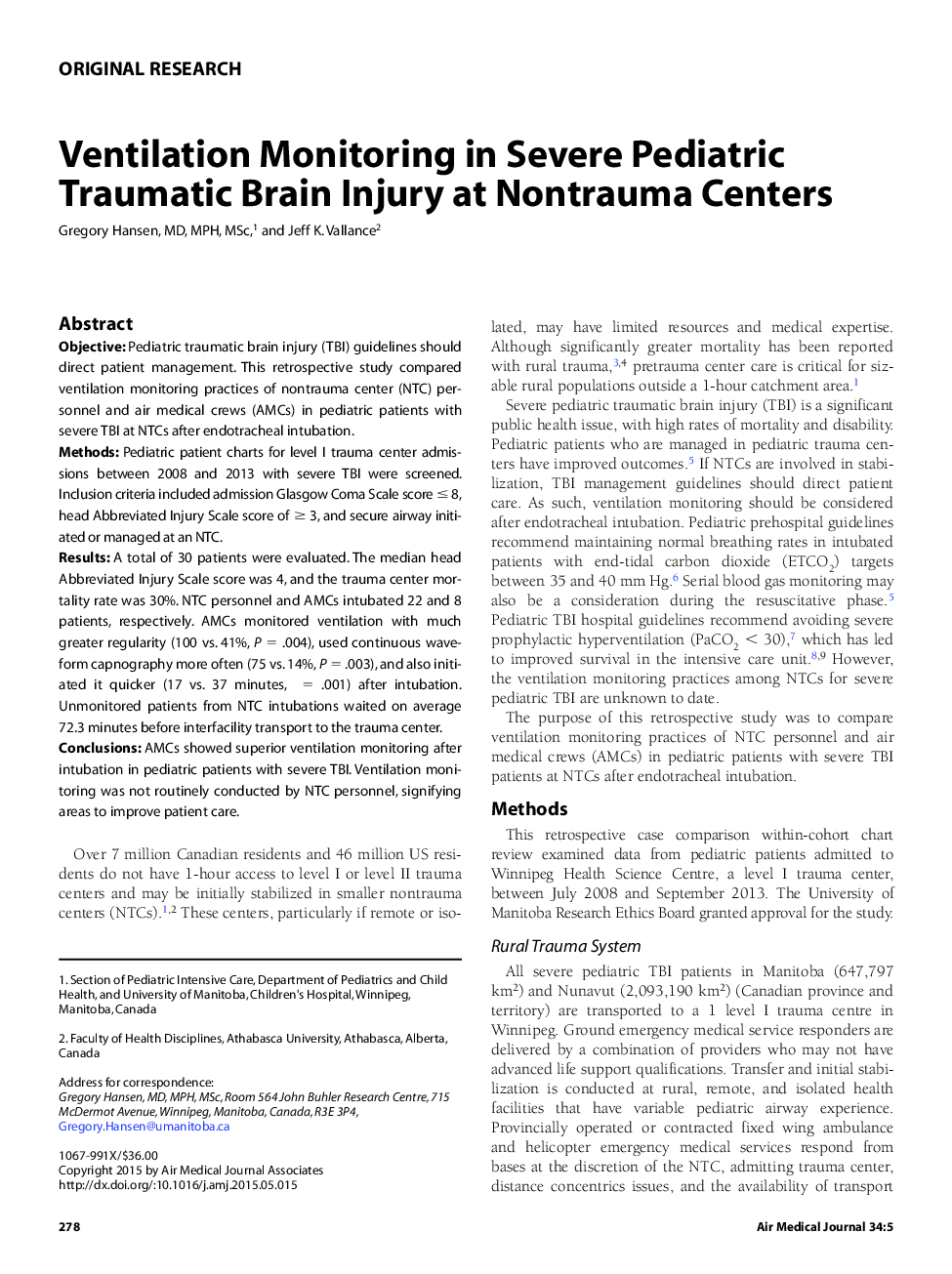| Article ID | Journal | Published Year | Pages | File Type |
|---|---|---|---|---|
| 2604463 | Air Medical Journal | 2015 | 5 Pages |
ObjectivePediatric traumatic brain injury (TBI) guidelines should direct patient management. This retrospective study compared ventilation monitoring practices of nontrauma center (NTC) personnel and air medical crews (AMCs) in pediatric patients with severe TBI at NTCs after endotracheal intubation.MethodsPediatric patient charts for level I trauma center admissions between 2008 and 2013 with severe TBI were screened. Inclusion criteria included admission Glasgow Coma Scale score ≤ 8, head Abbreviated Injury Scale score of ≥ 3, and secure airway initiated or managed at an NTC.ResultsA total of 30 patients were evaluated. The median head Abbreviated Injury Scale score was 4, and the trauma center mortality rate was 30%. NTC personnel and AMCs intubated 22 and 8 patients, respectively. AMCs monitored ventilation with much greater regularity (100 vs. 41%, P = .004), used continuous waveform capnography more often (75 vs. 14%, P = .003), and also initiated it quicker (17 vs. 37 minutes, = .001) after intubation. Unmonitored patients from NTC intubations waited on average 72.3 minutes before interfacility transport to the trauma center.ConclusionsAMCs showed superior ventilation monitoring after intubation in pediatric patients with severe TBI. Ventilation monitoring was not routinely conducted by NTC personnel, signifying areas to improve patient care.
